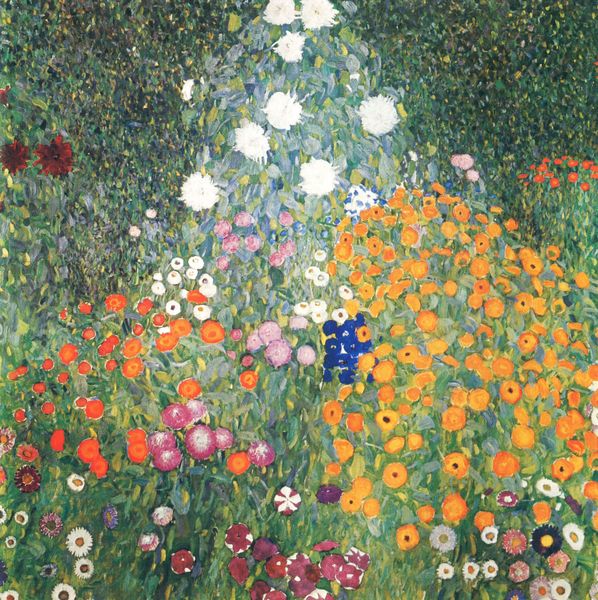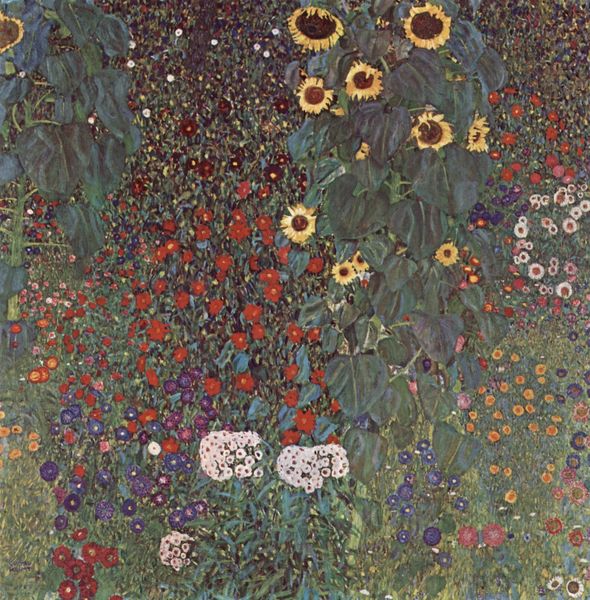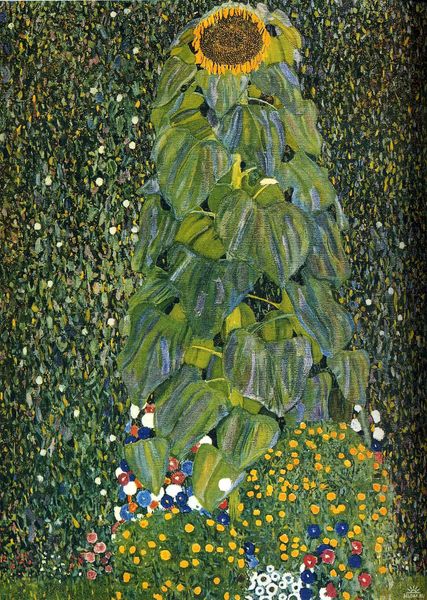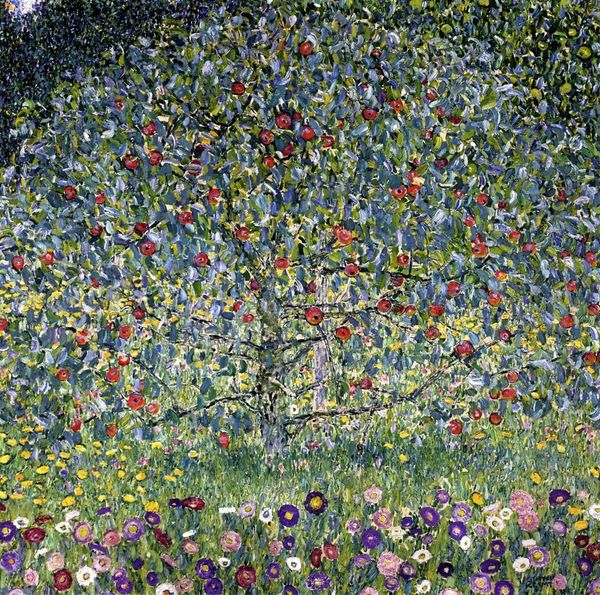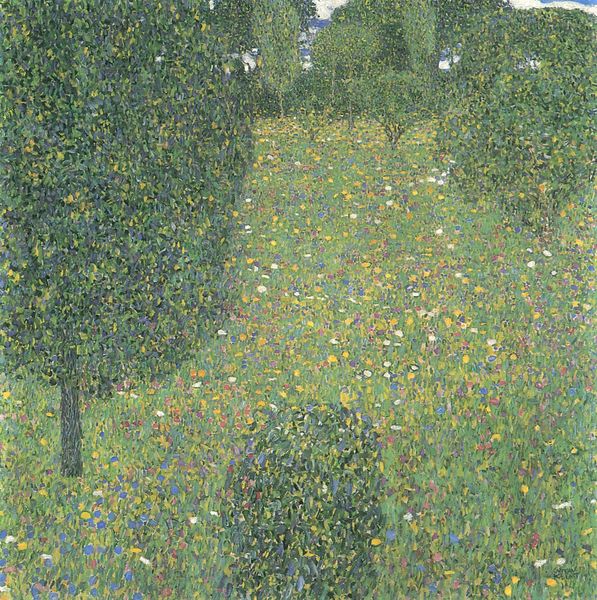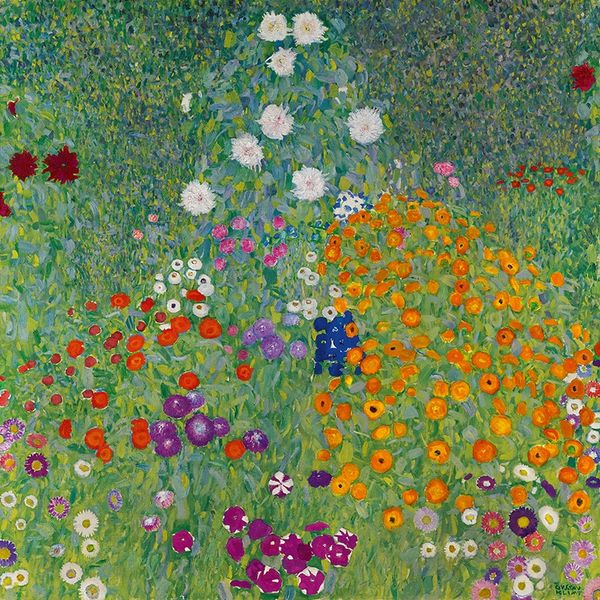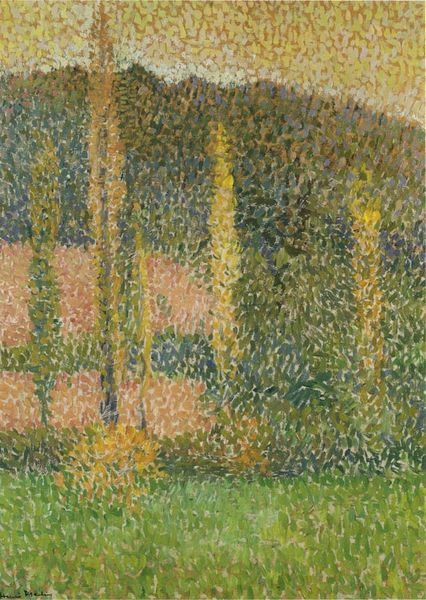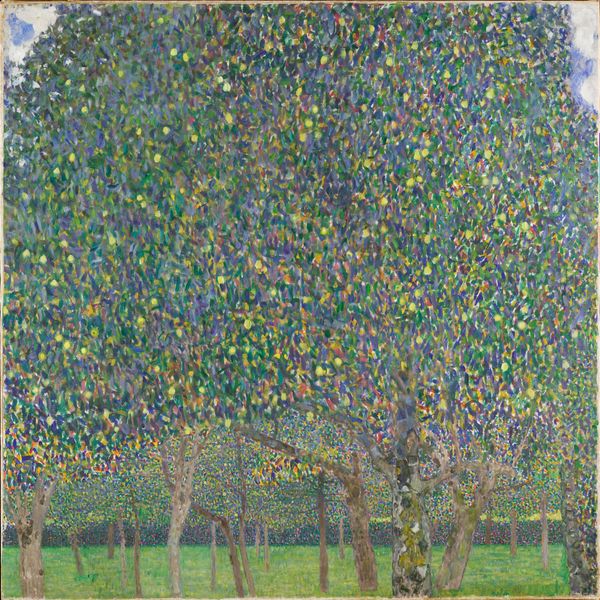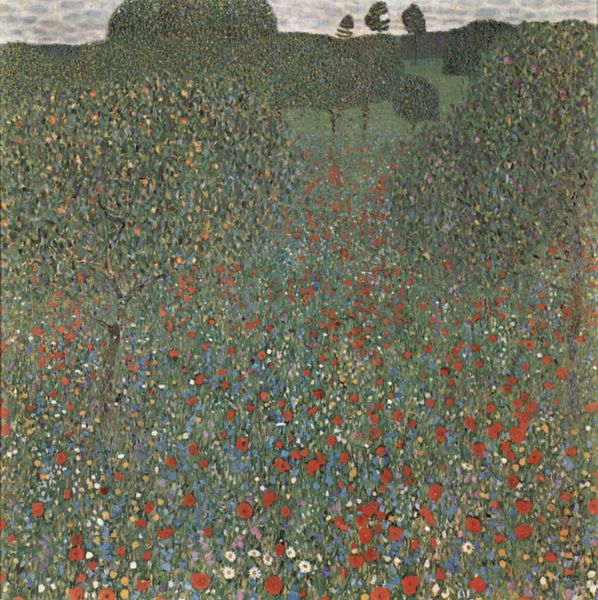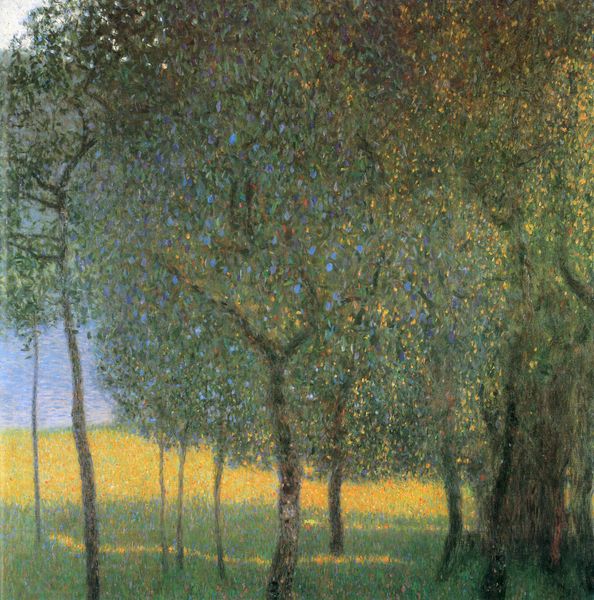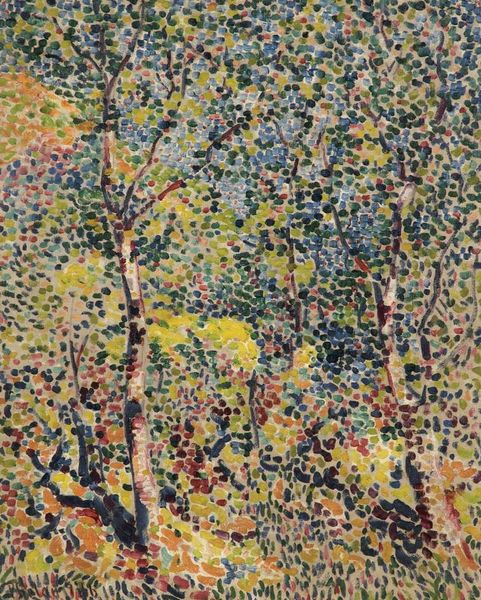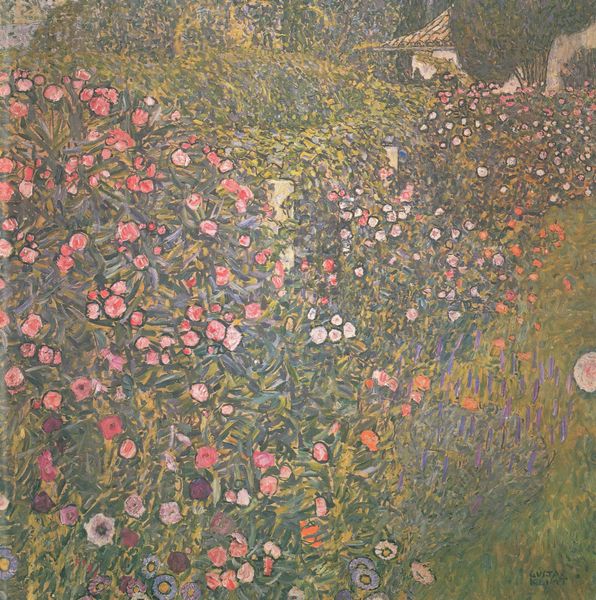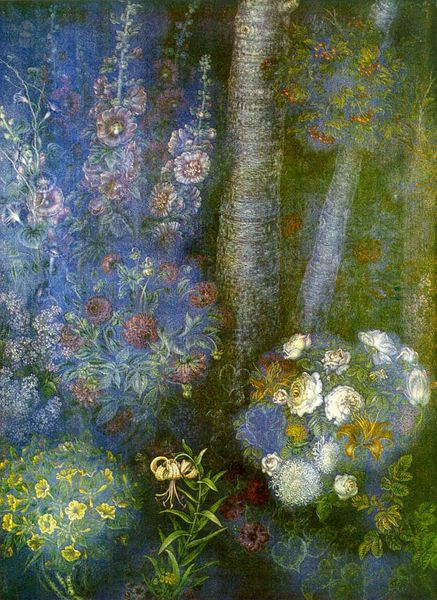
Dimensions: 110 x 110 cm
Copyright: Public domain
Editor: Here we have Gustav Klimt's "Roses Under the Trees," created in 1905, with oil paint. At first glance, I'm overwhelmed by this sea of green and these little explosions of color, especially the roses! What symbols do you see in this piece? Curator: Klimt’s landscapes, such as this one, reveal a deep dive into the symbolic language of nature. Consider the rose – historically a symbol of love, beauty, and transience. But Klimt reduces it to almost pure color, a visual echo within the larger tapestry of the leaves. Do you feel that flattening diminishes its symbolism, or perhaps amplifies it? Editor: I think maybe both? I still see the rose as representing beauty, but its repetition throughout feels like it’s part of something bigger, like it is representing life itself. Curator: Exactly! Now, observe the seemingly endless field of leaves, each one a daub of color. Do you sense a connection to pointillism, and perhaps even earlier, to tapestry traditions? Klimt merges figure and ground here, creating an all-encompassing field. There's almost a lack of perspective, wouldn't you agree? Editor: Yes, definitely. The lack of clear perspective almost feels like the painting could go on forever beyond its frame. Curator: That infinity, that embrace, reminds me of the "hortus conclusus," the enclosed garden, often associated with the Virgin Mary, and a space for both contemplation and secret rendezvous. Do you think Klimt may have intended a similar implication with his dense imagery? Editor: That is an interesting association. I learned something new and it's incredible how images through time carry these rich layers of cultural significance! Curator: Precisely. And hopefully, a lasting memory too.
Comments
No comments
Be the first to comment and join the conversation on the ultimate creative platform.
